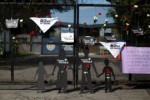How USAID lost its way — and how to fix America's humanitarian aid system
If America’s humanitarian aid system were a business, it would have collapsed long ago. No enterprise — public or private — can sustain itself without demonstrating value, yet for decades, the U.S. Agency for International Development has expanded unchecked, insulated from the accountability that defines a market-driven world.
As a result of the Trump administration’s Department of Government Efficiency review, USAID was formally dismantled, with its remnants absorbed into the State Department. The review laid bare an imperious bureaucracy adrift from its core mission. Even the Cato Institute — a steadfast proponent of limited government — endorsed its closure, calling it “a good idea,” bluntly stating that “foreign assistance is not accomplishing its goals.”
Then came USAID’s own reckoning. In August 2024, an Inspector General’s report confirmed what critics long suspected — systemic due diligence failures had left billions in taxpayer dollars flowing through a system with little control, inadequate oversight and no clear accounting of how funds were ultimately spent.
Among the most glaring concerns: the unchecked influence of public international organizations, including the United Nations, World Bank, UNICEF and World Food Program. These entities collectively administer vast sums of U.S. aid with minimal accountability and little measurable impact.
For much of its history, USAID wielded enormous influence over global aid policy, directing billions in taxpayer-funded assistance. But its decline was neither sudden nor unforeseeable.
What had once functioned........






















 Toi Staff
Toi Staff Jeffrey Bernstein Ph.d
Jeffrey Bernstein Ph.d Tarik Cyril Amar
Tarik Cyril Amar Gideon Levy
Gideon Levy Belen Fernandez
Belen Fernandez Penny S. Tee
Penny S. Tee Muhannad Ayyash
Muhannad Ayyash John Nosta
John Nosta Andrew Silow-Carroll
Andrew Silow-Carroll Sharona Margolin Halickman
Sharona Margolin Halickman
